Have you ever accepted a permission requested by a website that you later regretted? Maybe you’re getting bombarded with notifications or feel uncomfortable about a website knowing your location. Although you can’t take back any data you’ve already handed over to a website, it is possible (and advisable) to revoke any unused or unnecessary website permissions granted on your browser.
In this article, I’ll show you how to find individual website permissions and revoke them on the desktop versions of Chrome, Safari, Edge, and Firefox. The mobile versions of these browsers will have similar options.
In most cases, permissions granted will remain in place until you revoke them. Revoking permissions helps to secure your privacy and prevent websites from collecting personal data that can be shared with third parties or used to identify you. It can also prevent annoying website notifications and certain cyber attacks.
Chrome
Here’s how to revoke website permissions in Google Chrome:
- Click the three dots in the top right corner and select Settings
- In the Privacy and Security section, select Site Settings
- Under the Recent activity section, click View permissions and data stored across sites
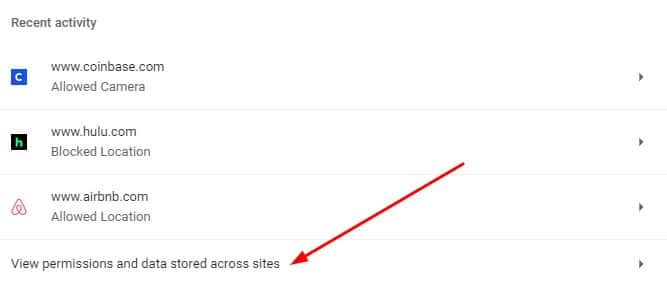
- Here you can change permissions across all sites visited or a specific site. We’ll do the latter. Find the website whose permission you want to revoke and click on it.
- You’ll see any subdomains housed under the site’s entry. You can revoke permissions for all of them, but the top one is usually the main site.
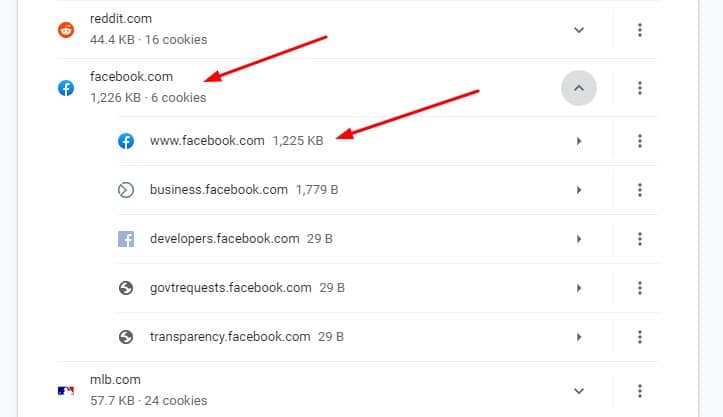
- You are now presented with a list of all the available permissions for the site and their current settings. Adjust them how you wish. In the example below, I’ve disabled notifications from Facebook.
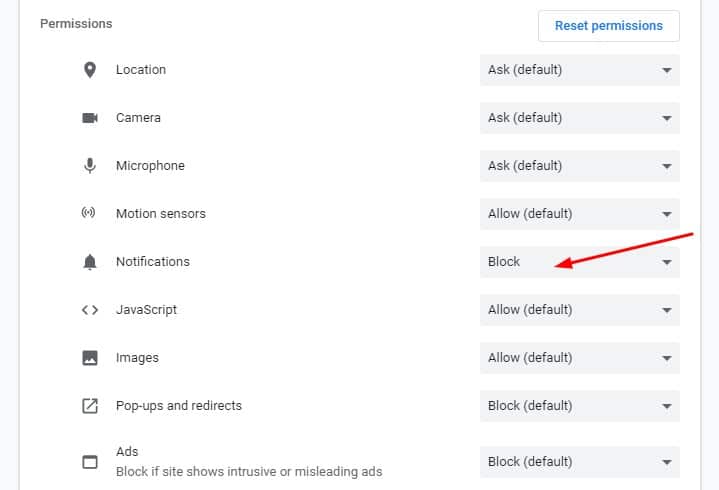
You can also click the “reset permissions” button to restore all of the permissions to their default settings.
Firefox
Here’s how to revoke website permissions in Mozilla Firefox:
- Open Firefox and click the three lines icon in the top right. Select Preferences.
- On the left sidebar, select Privacy & Security.
- Scroll down to Permissions. Click Settings… next to the permission you wish to adjust.
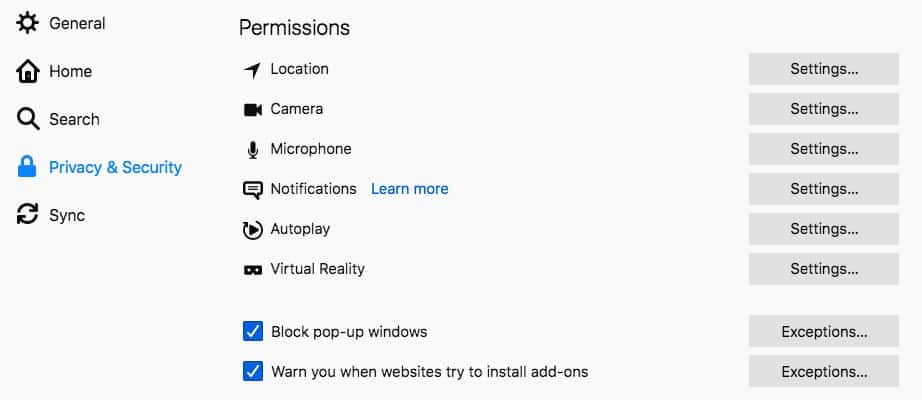
- A list of websites that you’ve set the given permission on will appear. Use the dropdown menu next to the site you want to restrict and set it to block to revoke the permission.
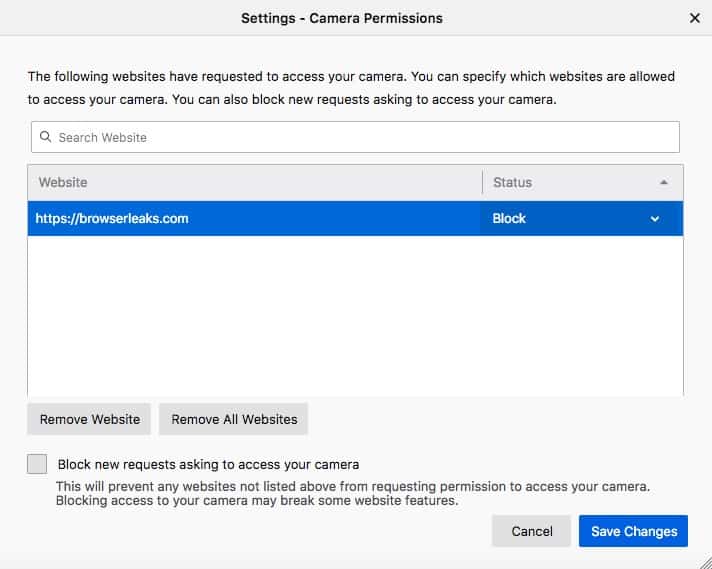
You can use the checkbox at the bottom to block all future requests for that permission. Removing websites will switch them back to the default behavior, which is typically to ask the user when they next visit the site.
Safari
Safari’s permissions are not as granular, nor are they centralized into a single menu, so you’ll need to make adjustments in a couple different places.
Here’s how to revoke website permission in Apple Safari:
- Open Safari and use the top bar to navigate to Safari > Preferences.
- Under the Security tab, you can enable or disable javascript and pop-ups. Note that these settings affect the entire browser and not specific sites.

- Under the Websites tab, you view what websites have access to each of the eight available permissions. Unfortunately, you can only view websites by permission, not permissions by website.
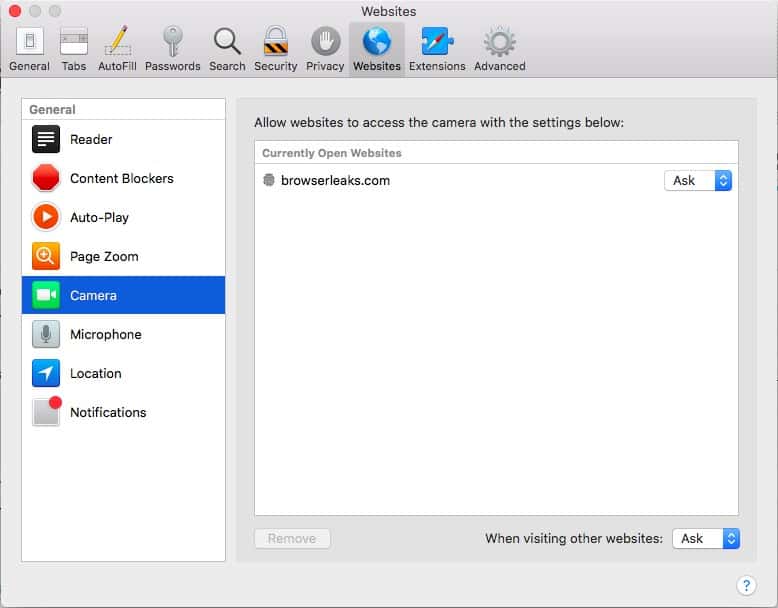
- By default, most permissions are set to Ask. Click the dropdown menu next to the site on which you want to change permissions. Select “Deny” to revoke that permission entirely.
Note that you can set the default permission for all other websites using the dropdown menu at the bottom.
Edge
Here’s how to revoke website permission in Microsoft Edge:
- Click the three dots icon in the top right corner and select Settings.
- In the left sidebar, select Cookie and site permissions.
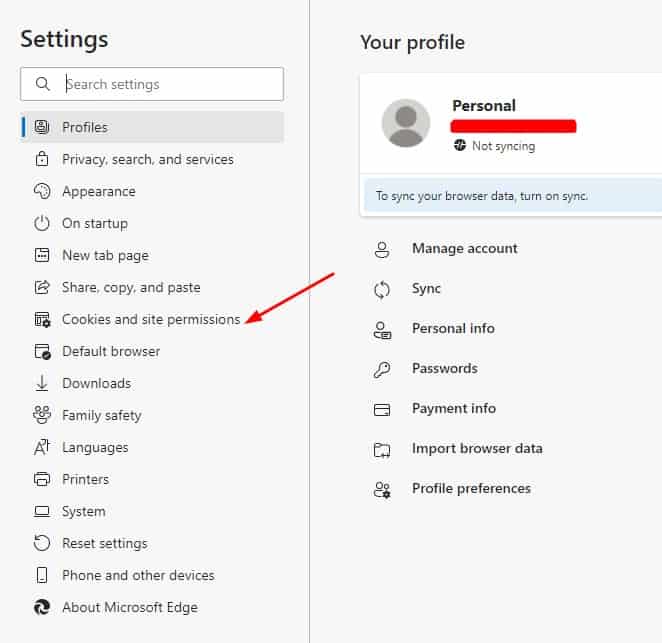
- Under Site permissions, click All sites.
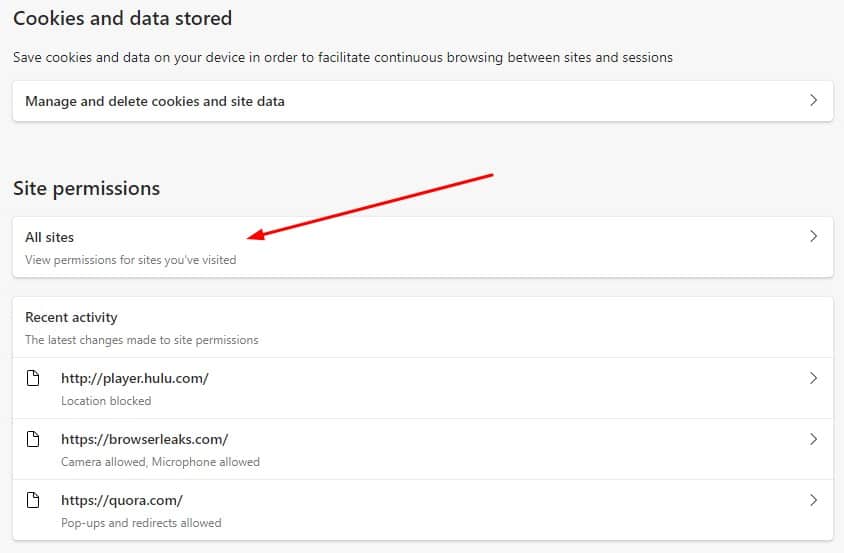
- Here you can adjust permissions for all sites visited or a specific site. We’ll do the latter. Click the arrow next to the site for which you want to change permissions.

- You are presented with a list of all the permissions available to the site. Adjust them as you please. In this example, I’ve blocked Javascript from running on Hulu.
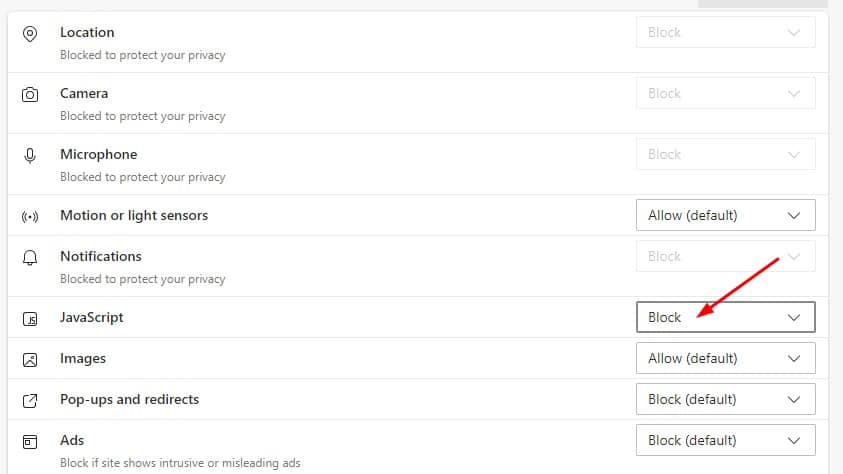
You can also click the Reset permissions button at the top to restore all of a site’s permissions to default.
Which website permissions should I revoke?
Here are a few of the more important permissions to consider revoking:
- Notifications – Probably the most requested permission on websites today. Block it to get rid of pesky website notifications
- Location – Tells websites where you are. Pretty self-explanatory
- Camera and microphone – You definitely don’t want websites to be able to record audio and video of you. These can also allow for WebRTC leaks when using a VPN
- Ads – Advertisements aren’t just annoying to look at. They are usually fed into a website from a third-party source that wants to track you. Ads often place tracking cookies on browsers and the more malicious ones can launch attacks on your device
- Automatic downloads – A definite no-no if you want to keep your device malware-free
- Clipboard – When you copy something with CTRL+C, that content is stored in your device’s clipboard. Allowing a website to copy text to your clipboard could open you up to all sorts of attacks, or allow a site to spy on existing clipboard content
- Pop-ups and redirects – Used in cyberattacks since time immemorial
- Scripts (Javascript) – This one is debatable. Javascript is necessary for many websites to function, but is also used in a huge range of cyberattacks. If you don’t want to revoke it completely, consider using a script blocking browser extension like NoScript, ScriptSafe, or uBlock Origin. That will enable you to allow or deny scripts on an individual basis
L’article How to revoke website permissions in your browser (Chrome, Firefox, etc.) est apparu en premier sur Comparitech.

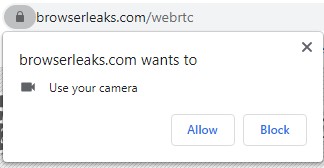
0 Commentaires